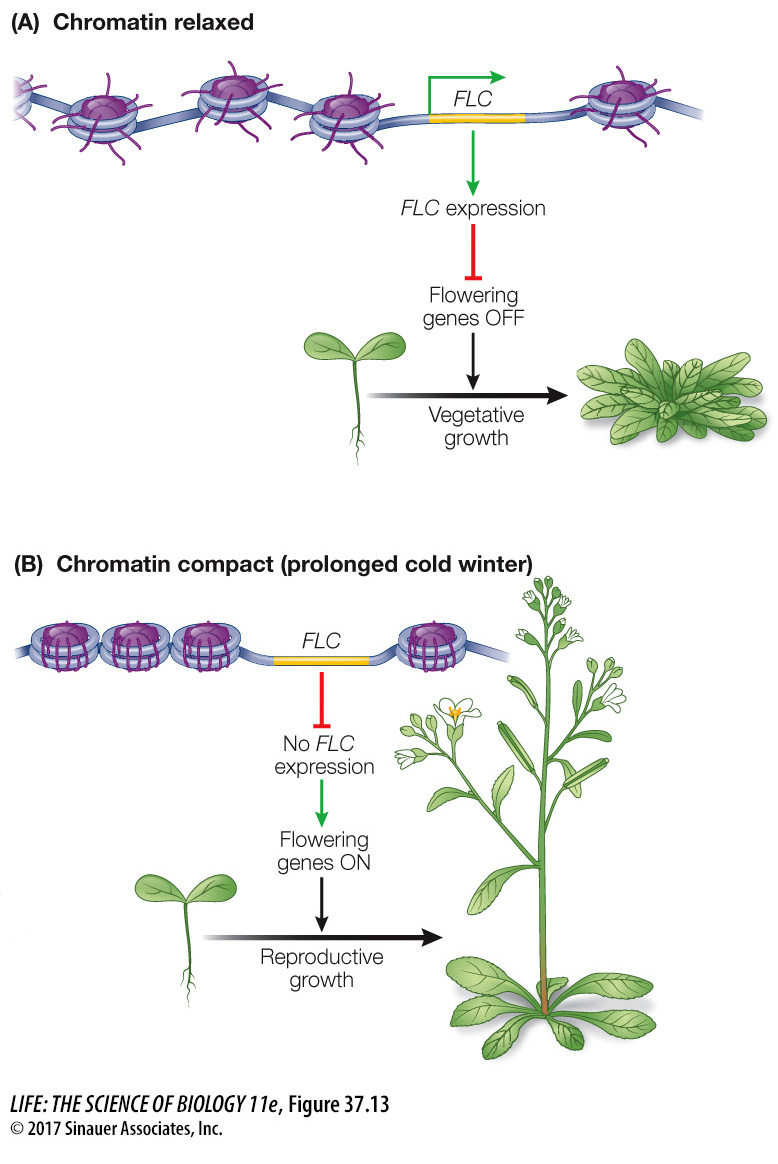Flowering can be induced by temperature or gibberellin
Whereas some plants use the environmental cue of day length to induce flowering, other plants use different mechanisms. These include temperature (another environmental cue) and gibberellin (an internal, hormonal cue).
TEMPERATURE In some plant species, notably certain cereal grains, the environmental signal for flowering is cold temperature, a phenomenon called vernalization (Latin vernus, “spring”). In both wheat and rye, we distinguish two categories of flowering behavior. Spring wheat, for example, is a typical annual plant: it is sown in the spring and flowers in the same year. Winter wheat is sown in the fall, grows to a seedling, overwinters (often covered by snow), and flowers the following summer. If winter wheat is not exposed to cold in its first year, it will not flower normally the next year.
Studies of Arabdipsosis have shown how vernalization leads to flowering (Figure 37.12). In some strains of Arabidopsis a gene called FLC (FLOWERING LOCUS C) encodes a transcription factor that blocks the FT–

*Epigenetics plays an important role in the inhibition of FLC gene expression by cold temperature. Before vernalization, the chromatin at the promoter of the FLC gene is in a relaxed configuration, with histone protein acetylation lowering the ionic attraction of these proteins for DNA, which allows transcription (Figure 37.13A). During vernalization, a gene is expressed whose protein product is involved in the deacetylation of histones on the FLC gene. Deacetylation causes the chromatin to be more compact, which blocks FLC gene expression (Figure 37.13B).

Media Clip 37.2 How Plants Remember
*connect the concepts As described in Key Concept 16.4, epigenetic remodeling of chromatin involves loosening the nucleosome–
GIBBERELLIN Arabidopsis plants do not flower if they are genetically deficient in the hormone gibberellin, or if they are treated with an inhibitor of gibberellin synthesis. These observations implicate gibberellins in flowering. Direct application of gibberellins to Arabidopsis buds results in activation of the meristem identity gene LEAFY, which in turn promotes the transition to flowering.